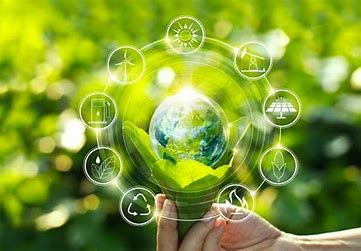
The Evolution of Eco-Friendly Manufacturing: A Path to Sustainable Production
Introduction
Eco-friendly manufacturing processes are essential for minimizing negative environmental impacts and promoting sustainability. This article explores the importance of adopting these processes in today’s world.
Historical Background
The shift towards eco-friendly manufacturing emerged as a response to the environmental consequences of industrialization. Over time, manufacturing practices have evolved, leading to the development of more sustainable approaches.
Key Concepts and Definitions
Sustainability: The ability to meet present needs without compromising the ability of future generations to meet their own needs. In eco-friendly manufacturing, sustainability involves practices that balance environmental, social, and economic factors.
Renewable Energy Sources: The use of solar, wind, and hydroelectric power plays a significant role in eco-friendly manufacturing. Transitioning to these sources reduces reliance on fossil fuels, decreases greenhouse gas emissions, and promotes a cleaner energy future.
Waste Reduction and Recycling: Efficient waste management systems and recycling initiatives help minimize waste generated by manufacturing processes. Implementing closed-loop manufacturing enables the reuse of materials, reducing the demand for virgin resources and minimizing environmental impact.

Life Cycle Assessment: This approach evaluates the environmental impacts of a product throughout its entire life cycle. It considers factors such as raw material extraction, production, distribution, use, and disposal, helping manufacturers identify improvement opportunities.
Green Materials and Technologies: Eco-friendly materials and technologies are vital in sustainable manufacturing. Green materials are sourced sustainably and have minimal environmental impact, while green technologies utilize energy-efficient processes and reduce waste generation.
Main Discussion Points
Point: Sustainable Energy Use in Manufacturing Processes
Transitioning to renewable energy sources, such as solar panels and wind turbines, reduces the carbon footprint of manufacturing. It also decreases reliance on fossil fuels and brings long-term cost savings.
Point: Waste Reduction and Recycling Strategies
Efficient waste management and recycling initiatives minimize environmental impact, conserve resources, and create a circular economy. Implementing closed-loop manufacturing reduces waste generation and promotes sustainability.
Point: Green Materials and Technologies
Using eco-friendly materials and adopting green technologies significantly reduces the environmental footprint of manufacturing processes. Choices such as biodegradable alternatives and recycled materials contribute to the sustainability of the entire product lifecycle.
Case Studies or Examples
Company X: Successful Implementation of Eco-Friendly Manufacturing Processes
Company X integrated renewable energy sources, optimized waste management systems, and utilized green materials. As a result, they achieved reduced energy consumption, decreased waste generation, and improved brand reputation.

Industry Y: Transformation towards Sustainable Production Methods
Industry Y embraced eco-friendly manufacturing by implementing energy-efficient technologies, adopting sustainable materials, and implementing comprehensive waste reduction strategies. This resulted in reduced environmental impact and increased operational efficiency.
Current Trends or Developments
Innovations in Eco-Friendly Manufacturing Technologies
Ongoing research and development have led to the use of smart sensors, automation, and artificial intelligence to optimize resource usage and reduce environmental impact.
Research Findings on the Environmental Impact of Manufacturing Processes
Continual research provides insights into the environmental impact of manufacturing processes, allowing manufacturers to make informed decisions and implement sustainable practices.
Government Policies and Regulations Promoting Eco-Friendly Practices
Governments worldwide are enacting policies and regulations, such as financial incentives and stricter environmental standards, to encourage eco-friendly manufacturing.
Challenges or Controversies
Cost Implications of Eco-Friendly Manufacturing
Implementing eco-friendly practices may involve higher upfront costs. However, long-term benefits such as energy savings and improved brand reputation outweigh these initial expenses.
Resistance from Industries and Stakeholders
Some industries and stakeholders may resist change due to concerns over profitability or operational disruption. Overcoming this resistance requires effective communication and education on the long-term benefits of eco-friendly manufacturing.
Conflicting Viewpoints on the Effectiveness of Eco-Friendly Manufacturing
Debates exist regarding the effectiveness of eco-friendly manufacturing in mitigating climate change and environmental degradation. Continued research contributes to a better understanding of the benefits and limitations of these practices.

Future Outlook
Potential Advancements in Sustainable Manufacturing Practices
Advancements may include more efficient renewable energy technologies, the utilization of bio-based materials, and increased automation for streamlined processes.
Integration of Artificial Intelligence and Automation for Eco-Friendly Processes
Artificial intelligence and automation can optimize eco-friendly manufacturing processes, leading to increased efficiency and reduced environmental impact.
Growing Consumer Demand for Eco-Friendly Products
Manufacturers are driven by consumer demand for eco-friendly products, which benefits the environment, enhances brand reputation, and increases customer loyalty.
Conclusion
Adopting eco-friendly manufacturing processes is crucial for a sustainable future. By integrating renewable energy sources, implementing waste reduction strategies, and utilizing green materials, manufacturers can minimize environmental impact, conserve resources, and meet consumer demand for eco-friendly products.




